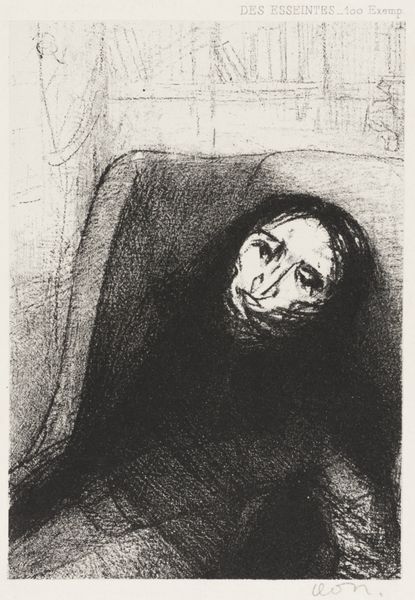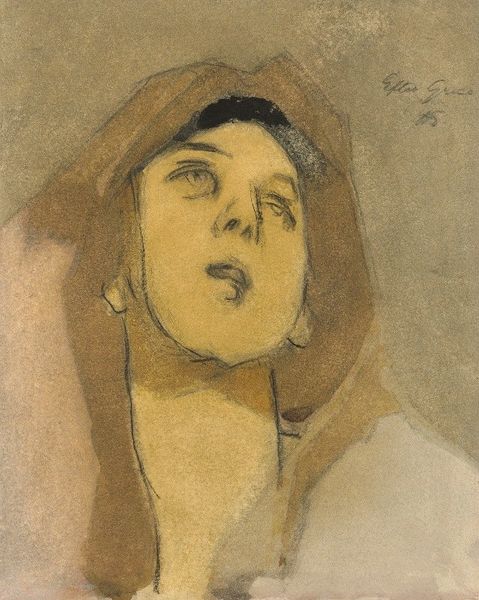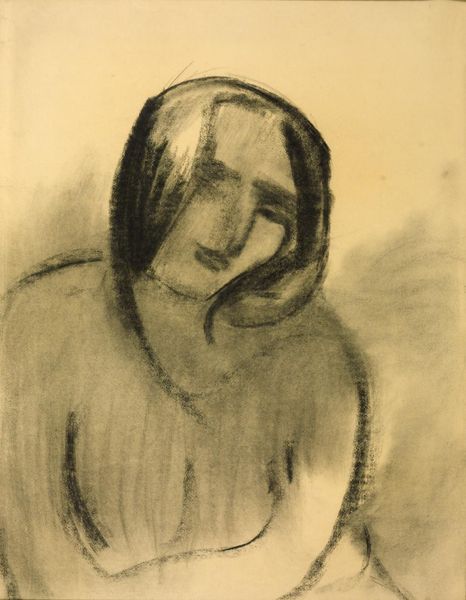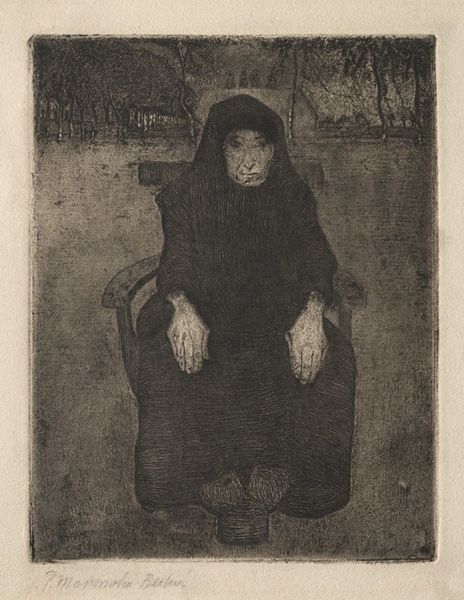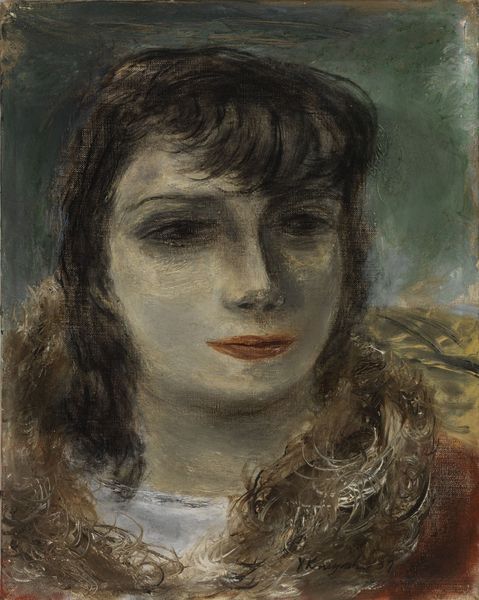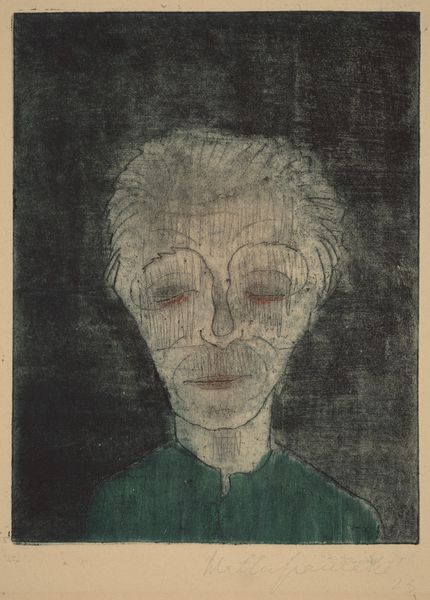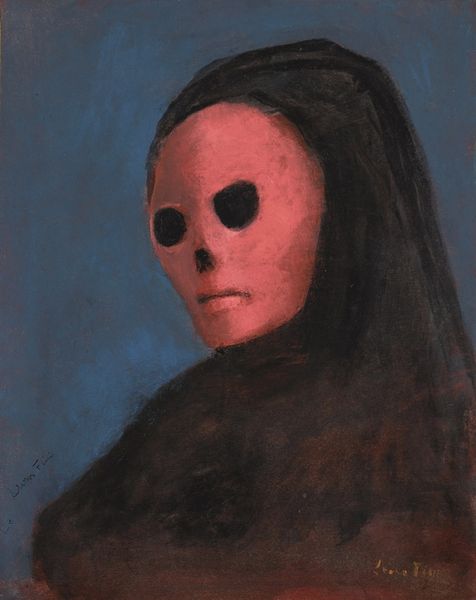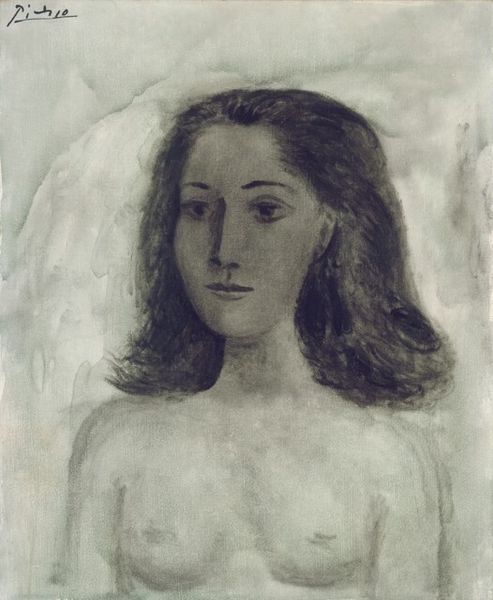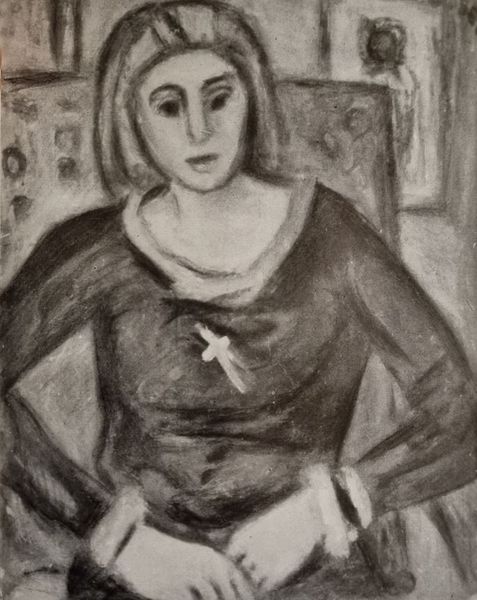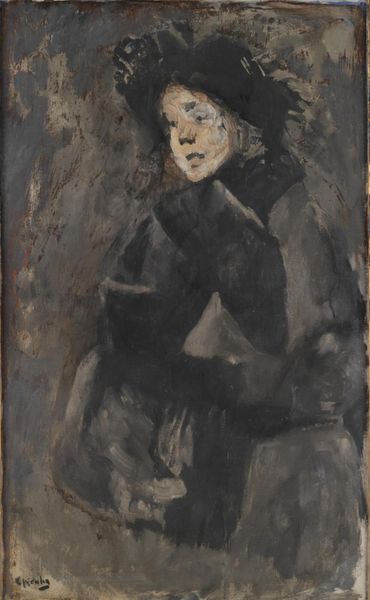
Copyright: Public Domain: Artvee
Curator: Up next, we have "Melancholie," a self-portrait rendered in charcoal and pencil by Léon Spilliaert in 1928. It has such a haunting quality about it. What do you make of it? Editor: I feel drawn in by the stark simplicity and direct gaze of the subject; there’s a somberness that reminds me of being a teenager with no understanding of why you're experiencing sadness. It's the mystery of sadness, that deep fog... Curator: That sense of youthful melancholia makes perfect sense. Spilliaert often explored psychological themes in his work, and his self-portraits are particularly introspective. It's almost like a visual representation of that solitary, brooding space teenagers often occupy as they try to figure themselves out. Editor: Right! The lines almost vibrate with raw emotion, yet it's also controlled, contained within this monochrome world. He’s really capturing a specific feeling of alienated introspection. The almost total absence of highlights around her eyes, though, almost obscures the person. Is this to emphasize what depression does to someone's affect, their eyes? Curator: Absolutely. He uses light and shadow masterfully. The figure emerges from this dark, almost undefined background, heightening the sense of isolation. Expressionism often served as a reaction to broader socio-political factors, to mechanization and urbanization for example. Spilliaert uses an artistic rendering that’s very spare; what’s included serves as an entry into feeling that emotion for oneself. Editor: It does seem as if it makes her experience somehow universal. You mentioned expressionism; Spilliaert walks the edge, right? Not fully expressionistic or symbolist but dancing with those styles? The longer I gaze the more it moves me! There’s that magnetic quality of the unsaid in the piece, I can see now! Curator: Exactly. It’s that blend, and his focus on interior states, that makes him such a unique figure. This artwork is a perfect example of his willingness to be vulnerable, raw. This one seems to reflect not just the social moods, but Spilliaert's unique mind. Editor: Absolutely. This work resonates long after you've left it. Thanks for pulling us deeper into that abyss!
Comments
No comments
Be the first to comment and join the conversation on the ultimate creative platform.

